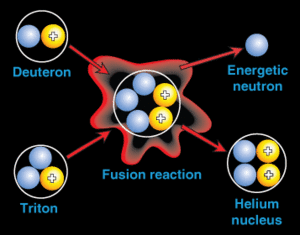Nuclear fusionNew design for clean nuclear fusion reactor unveiled
Researchers have patented a nuclear fusion reactor by inertial confinement which, in addition to being used to generate electric power in plants, could be applied to propel ships. The fusion chamber shape and size can adapt to the type of fuel being used.

Diagram of the inertial confinement process // Source: rochester.edu
A researcher at the Universidad Politécnica de Madrid (UPM) has patented a nuclear fusion reactor by inertial confinement which, in addition to being used to generate electric power in plants, could be applied to propel ships.
A UPM release reports that the invention is the result of a work carried out by the Professor José Luis González Díez from the Higher Technical School of Naval Engineering of UPM, who has contributed to the solution of the problem of contamination risk associated with the generation of nuclear fission power. It is a design of a fusion nuclear reactor by laser ignition of 1000 MWe which uses as fuel hydrogen isotopes that can be extracted from water, allowing for a significant saving in fuel.
Nuclear fission is generally considered risky energy because of the contamination risks of radioactive waste resulting from the electricity generation process. The 2011 Fukushima disaster in Japan has increased the perception of the risks associated with traditional, or fission-based, nuclear power generation, leading to more research on alternative ways to obtain energy.
For years, nuclear fusion was studied as an alternative to nuclear fission because of its security and cost advantages relative to fission. Today, however, there is still not one working any fusion reactor to produce continuous electrical energy of high voltage.
As a result of the Project Fusion Power, González Díez designed a prototype of fusion reactor by inertial confinement, which offers total conversion of material into energy. The fusion chamber can adapt to the type of fuel being used, specifically, deuterium-tritium, deuterium- deuterium, or hydrogen-hydrogen. Depending on the fuel, the size of the chamber can be adapted as well as its shape, the outer and inner equipment, coolants, moderators, shields, and equipment of ignition.
This project has also led a design of a modular structure to realize coupling of various fusion reactors, which would allow for the maximization of power production, thus solving the problem of high current energy demand. In addition, this invention may make nuclear fusion reactors more suitable for powering ships.
